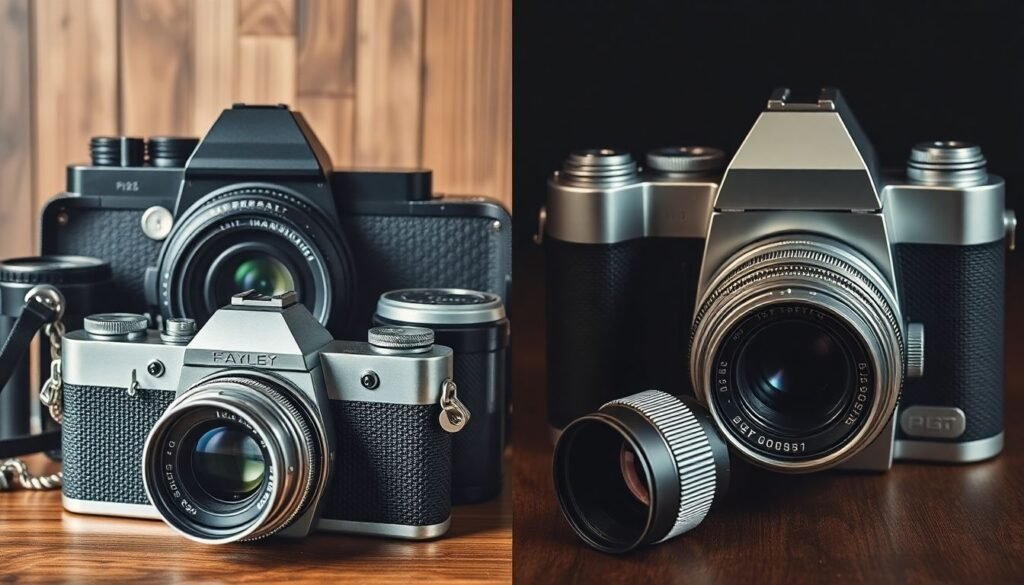Physical Address
304 North Cardinal St.
Dorchester Center, MA 02124
Physical Address
304 North Cardinal St.
Dorchester Center, MA 02124

Disposable cameras became a game-changer in photography during their heyday. They offered the everyday person a chance to capture memories without needing an expensive camera or technical know-how. But their straightforward design sparks curiosity: Did early disposable cameras use batteries? To answer this, we must dig into the mechanics of these cameras and their evolution over time.
Disposable cameras, also known as single-use cameras, are simple devices preloaded with a fixed roll of film. Their primary purpose is to provide a fuss-free photography experience, allowing users to take pictures and hand the entire device to a lab for film processing. Unlike traditional cameras, disposable cameras are designed to be lightweight, affordable, and discarded after the film is developed.
They became popular in the 1980s and 1990s, filling a niche market for travelers, partygoers, and casual photographers. Their appeal lies in their simplicity and spontaneity—attributes that negate the need for extensive camera knowledge.

Early disposable cameras relied on a remarkably straightforward design. The core components included:
These cameras functioned entirely on mechanical processes. Users pressed the shutter button to expose the film to light, and then they manually advanced the film to prepare for the next shot. This simplicity meant that early models did not rely on electricity to operate.

No, early disposable cameras did not use batteries. Their design was purely mechanical, making them both affordable and user-friendly. The absence of electronics meant there was no need for a power source. The film advancement, shutter release, and lens mechanics operated through manual force.
This battery-free operation was ideal for keeping production costs low and ensuring reliability, even in remote locations where batteries might not be easily available.

As photography technology progressed, disposable cameras began incorporating additional features to enhance user experience. The most notable innovation was the built-in flash, which allowed users to take pictures in low-light conditions. This feature, however, required a power source—enter the battery.
Flash-enabled disposable cameras used small batteries to charge a capacitor that powered the flashbulb. This innovation allowed disposable cameras to remain competitive with more advanced cameras by offering functionality in diverse lighting conditions.

The evolution from purely mechanical disposable cameras to those with battery-powered flash units marked a significant shift in functionality. Let’s break down the differences:
While both types catered to different needs, the addition of flash units with batteries was instrumental in sustaining the popularity of disposable cameras in the 1990s.

Kodak, one of the pioneers of disposable cameras, introduced the Kodak Fling in the late 1980s. These early models were entirely mechanical and lacked a flash. As the market evolved, Kodak incorporated battery-powered flash units in later models, like the Kodak FunSaver, to meet growing consumer demands.
Fujifilm quickly became a strong competitor with its own line of disposable cameras, such as the QuickSnap series. Fujifilm focused on innovation by adding features like waterproof casing and battery-powered flash capabilities, ensuring their models were versatile and reliable.
Brands like Ilford and AGFA also contributed to the disposable camera market, offering unique takes on functionality and design. Some even specialized in black-and-white film for niche photography enthusiasts.

The inclusion of flash in disposable cameras was a game-changer. Here’s how it worked:
This mechanism allowed users to take photos in poorly lit environments without compromising picture quality.

Despite the rise of digital photography, disposable cameras continue to have a niche following. Modern disposable cameras often include features like:
These advancements reflect the enduring appeal of disposable cameras in the digital age.

While batteries expanded the capabilities of disposable cameras, they also introduced environmental challenges:

With smartphones and digital cameras dominating photography, disposable cameras might seem outdated. However, they continue to thrive for several reasons:

The introduction of batteries in disposable cameras mirrors trends in other types of cameras. Here’s a brief comparison:

In a world of instant gratification and digital perfection, disposable cameras offer something different:
These qualities make them a fun and practical choice for casual photographers and event organizers.

As technology advances, disposable cameras may undergo further evolution. Potential trends include:
While their form may change, disposable cameras are likely to retain their charm for years to come.

So, did early disposable cameras use batteries? No, their simple, mechanical design required no power source. However, as consumer expectations grew, manufacturers introduced battery-powered flash units, expanding the usability of disposable cameras in various lighting conditions. Despite being overshadowed by digital technology, disposable cameras remain a beloved relic of photography history, celebrated for their simplicity and unique aesthetic.
Disposable cameras became popular in the late 1980s, with companies like Kodak and Fujifilm leading the market.
No, early models lacked a flash. Flash units were added later, requiring batteries for operation.
The batteries are designed to last for the camera’s lifespan, typically covering the usage of one preloaded film roll.
Not entirely. The integration of batteries and plastic components raises environmental concerns, though brands are exploring sustainable alternatives.
Their nostalgic appeal, simplicity, and unique film aesthetic keep them relevant, even in the digital age.